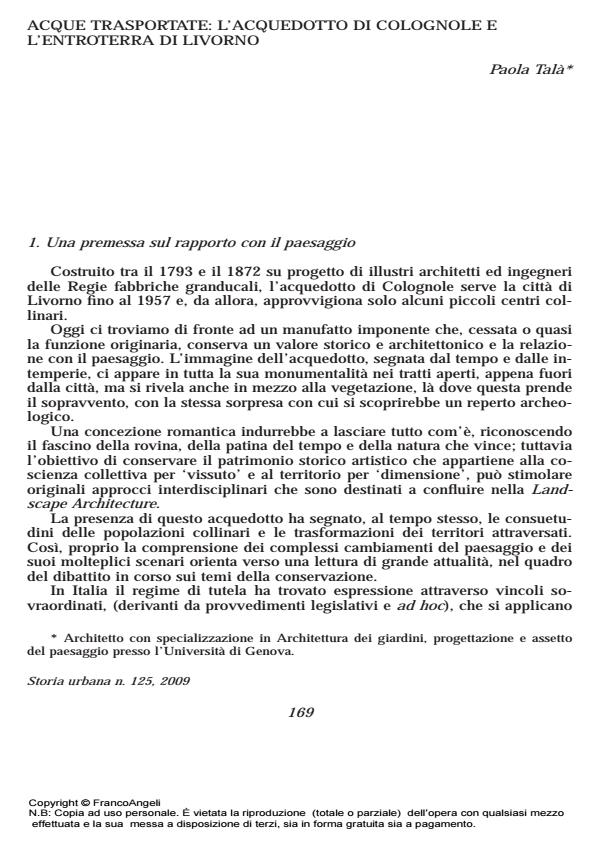Acque trasportate: l'acquedotto di Colognole e l'entroterra di Livorno
Journal title STORIA URBANA
Author/s Paola Talà
Publishing Year 2010 Issue 2009/125
Language Italian Pages 18 P. 169-186 File size 897 KB
DOI 10.3280/SU2009-125009
DOI is like a bar code for intellectual property: to have more infomation
click here
Below, you can see the article first page
If you want to buy this article in PDF format, you can do it, following the instructions to buy download credits

FrancoAngeli is member of Publishers International Linking Association, Inc (PILA), a not-for-profit association which run the CrossRef service enabling links to and from online scholarly content.
Conducted waters. The aqueduct of Colognole through the landscape around Leghorn - Aqueduct Leghorn Landscape Landscape Architecture Built between 1793 and 1872 on the project of famous architects and engineers of Regie Fabbriche Granducali, the aqueduct of Colognole worked for the city until 1957. From that moment it was abandoned and today it supplies only some villages on the hills with water. We face a monumental artefact that has lost the function for which it had been built but has not lost its historical and achitectural value and its relationship with the surrounding landscape. The setting up of this aqueduct has marked the evolution of the territories through which it passed and of the customs of local population. The knowledge of these complex changes over time allows a comprehension of the landscape that helps us to face important issues of conservation and protection. This study frames the subject starting from the increased necessities for water of the city and harbour of Leghorn; then it shows the complex articulation of the long lasting building process of the aqueduct. The last part is dedicated to the importance of geographical knowledge of the landscape, as it emerges from the descriptions of the most famous historical guidebooks of the nineteenth century and from the events related to the construction of the "Aqueduct Promenade".
Paola Talà, Acque trasportate: l'acquedotto di Colognole e l'entroterra di Livorno in "STORIA URBANA " 125/2009, pp 169-186, DOI: 10.3280/SU2009-125009